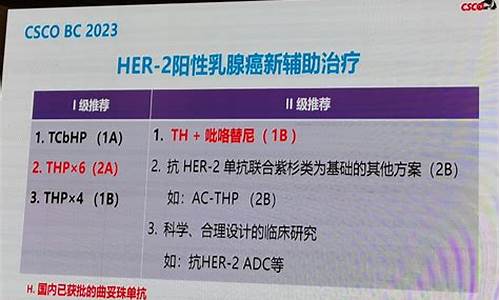乳腺癌诊治指南2018_2008乳腺癌治疗指南

10年代,第一次发现了乳腺导管内原位癌(DCIS)。在美国,每年有60000例DCIS病例,约占新诊断乳腺癌病例的四分之一。虽然DCIS属于癌前病变,但是需要积极治疗。如果不治疗,DCIS可以发展为浸润性癌,引起死亡。2005年的回顾例分析结果显示,在少数病例中,无积极治疗的乳腺癌死亡率约为10%-20%。近期的数据显示,积极治疗后的DCIS死亡率只有3.3%。这种差异与10%的同侧浸润性乳腺癌复发率(IBTR)有关,即使接受治疗(无放射治疗)的患者也是如此。目前,依据多个里程碑式试验结果来确定DCIS治疗方案。乳房肿瘤切除必须与放射治疗合用,以便减少局部复发率(特别是浸润性复发),随后加用抗雌激素治疗提升局部控制率。但是对DCIS的临床特点和基因特点有更多了解后,治疗相关风险不仅关系到治疗强度和不良反应,而且关系到身体、情感、经济等各方面。
确定放射疗法治疗DCIS的地位
4个里程碑式试验确定了放射疗法治疗DCIS的地位。4个随机试验比较了乳房肿瘤切除后放疗和无放疗的效果,分别是美国国家外科治疗乳腺和肠道项目(NSABP)B-17试验、SweDIC试验、欧洲癌症研究和治疗组织10853试验、英国癌症研究协作组织试验。每个试验都证实加用放射疗法能减少50%的同侧浸润性乳腺癌复发率(IBTR)。所有4个研究都证实了加用放疗能显著减少浸润性复发、减少乳腺癌死亡率。但是这些试验或对这些试验的荟萃分析结果未能证实放射疗法能延长患者总生存时间。
DCIS治疗去放疗的尝试
由于放射疗法未能延长患者总生存时间,研究人员观察了低风险DCIS患者不用放疗的效果。美国东部肿瘤协作组(ECOG)E5194试验纳入肿瘤大小≤2.5cm的低级别/中等级别DCIS患者、肿瘤大小≤1.0cm的高级别DCIS患者共700名。肿瘤边缘阴性最小距离为3mm。随访12年后,1/2级DCIS患者发生同侧浸润性乳腺癌复发率(IBTR)为14%、3级DCIS患者发生IBTR为25%。在这期间两组的复发率都保持平稳状态。
丹娜法伯医院的试验提供了另一份数据。该试验纳入肿瘤大小<2.5cm、肿瘤边缘阴性≥1cm、1/2级DCIS术后患者。在这些低风险患者中,8年的局部复发率>13%,其中三分之一的患者是浸润性复发。
肿瘤放射治疗组(RTOG)9804试验同样评估了无放疗时DCIS治疗效果。与ECOG和丹娜法伯的单组试验不同,该试验患者接受保乳手术(BCS)后随机分入有放射治疗组和无放射治疗组。该试验低风险定义与ECOG试验稍有不同,肿瘤大小≤2.5cm、肿瘤边缘阴性最小距离为3mm、1/2级DCIS患者。由于获益不明显,提前终止了试验。但是即便在低风险人群中,放射疗法能显著降低同侧浸润性乳腺癌复发率(IBTR)(7年随访,有放疗1% vs 无放疗7%;P<0.001)。另外,患者对放疗的耐受性良好。两组的3级急性毒性发生率相同(约4%),放疗组晚期毒性反应发生率<1%。RTOG 9804试验回应了ECOG试验结果,低风险患者如果不用放疗每年增加复发风险1%。需要注意的是,这些研究没有常规使用抗雌激素治疗。抗雌激素治疗比例分别为丹娜法伯试验0%、ECOG试验30%、RTOG 9804试验两组加起来62%。如果所有的患者都接受抗雌激素治疗,那么放疗作用不那么明显。但是即便在严格监测的试验中激素治疗依从性也不高。专门评估内分泌治疗的NSABP B-35试验中患者依从性只有70%。
DCIS治疗去不掉放疗
有些人认为,由于没有随机临床试验能证明放疗能延长患者总生存时间,那么很多DCIS患者乳房肿瘤切除后不用接受放疗。在随访过程中密切监测病情,如有指征时放疗可当做挽救性治疗。但是放疗不能延长患者生存时间不等于没作用。10年的DCIS相关乳腺癌特定死亡率只有3%。
比较总生存时间上的显著性差异,需要足够大的样本量。这就是基于人口的数据变得有用的原因。大数据不仅可以提供国家基本情况,而且可以让医生有足够的样本量评估治疗方案是否对疾病产生显著疗效。
对美国DCIS治疗和疗效的监测、流行病学、最终效果的研究(Sagara等)结果给了些提示。30000名患者的死亡率约为2%。但是加用放疗能降低死亡率,有放疗1.8% vs 无放疗2.1%。尽管有这些改善,约有40%的DCIS患者从未接受过放疗。值得注意的是放疗改善患者生存时间与以下3个因素有关:高级别肿瘤、年龄小于60岁、较大肿瘤。这些发现是个别随机对照试验中未能提到的。
Smith等在2006年首次提出了预后评分方法,涉及诊断年龄、肿瘤级别、肿瘤大小、粉刺病史等因素。Sagara等的试验结果显示,预后评分4分或5分(包含5分以上评分)患者使用放疗后减少了70%的死亡率,预后评分5分患者中也存在5%的差异(P=0.03)。这个发现在早期乳腺癌协作组织浸润性癌荟萃分析中得到证实,成为早期浸润性乳腺癌患者接受保乳手术和放疗能减少死亡率的重要证据。
预测因素可以帮助医生区分哪些患者更适合做放疗。前面所讲的Smith预测评分是有效的预测工具;另一个评分工具Van Nuys预测指数,但没有广泛使用,没有得到外界广泛认可。肿瘤基因分析成为区分低、中、高风险DCIS患者的新方法。先前提到的ECOG亚组分析结果显示,低、中、高风险DCIS患者浸润性复发率分别为4%、12%、19%。近期的大样本量基因分析再次证明Oncotype DX DCIS评分可以预测局部复发。目前,关注点在低风险患者的高复发率(10年复发率为13%)和性价比。预测工具或肿瘤基因检测可以区分哪些患者获益于放疗的数据较少。在一些病例中,这些工具可以帮助医生和患者决定是否使用放射疗法。
另一个关注点是放疗DCIS的治疗周期。随机临床试验结果显示,全乳房大分割放疗(3周)与标准放疗(5周)的疗效和安全性相同。加拿大单中心试验和区域分析研究也观察了大分割放射疗法治疗DCIS患者效果。此外,乳腺局部加速放疗时间小于1周(放疗),且没有降低局部控制率,可作为特定DCIS患者的标准治疗方案。特定DCIS患者接受大分割和乳腺局部加速放疗能减少治疗时间超过50%,既能治疗肿瘤,又能保证胸部完整性。
ACR指南和NCCN指南
美国放疗协会(ACR)和美国国家综合癌症网络(NCCN)指南支持放疗作为所有DCIS患者常规疗法。因为,没有明确数据证明可以放弃放疗。但是年龄较大和/或有明显合并症患者单做乳房肿瘤切除。这些指南中提到的影响治疗决策的因素有,患者年龄、合并症、局部复发的可能性(基于肿瘤级别、边缘、受体状态)等。需要记住的是3级以上或边缘阳性肿瘤患者复发风险高。
结论:研究者认为保乳手术放疗是大部分乳腺导管内原位癌患者的标准治疗方案。放疗不仅减少局部复发,而且还可以减少浸润性复发。预后评分和肿瘤基因检测等工具尚不能区别哪些患者接受放疗后减少浸润性复发。
参考文献
1.Virnig BA, Tuttle TM, Shamliyan T, Kane RL. Ductal carcinoma in situ of the breast: a systematic review of incidence, treatment, and outcomes. J Natl Cancer Inst. 2010;102:170-8.
2.Ward EM, DeSantis CE, Lin CC, et al. Cancer statistics: breast cancer in situ. CA Cancer J Clin. 2015;65:481-95.
3.Collins LC, Tamimi RM, Baer HJ, et al. Outcome of patients with ductal carcinoma in situ untreated after diagnostic biopsy: results from the Nurses Health Study. Cancer. 2005;103:1778-84.
4.Sanders ME, Schuyler PA, Dupont WD, Page DL. The natural history of low-grade ductal carcinoma in situ of the breast in women treated by biopsy only revealed over 30 years of long-term follow-up. Cancer. 2005;103:2481-4.
5.Narod SA, Iqbal J, Giannakeas V, et al. Breast cancer mortality after a diagnosis of ductal carcinoma in situ. JAMA Oncol. 2015;1:888-96.
6.Eusebi V, Feudale E, Foschini MP, et al. Long-term follow-up of in situ carcinoma of the breast. Semin Diagn Pathol. 1994;11:223-35.
7.Wapnir IL, Dignam JJ, Fisher B, et al. Long-term outcomes of invasive ipsilateral breast tumor recurrences after lumpectomy in NSABP B-17 and B-24 randomized clinical trials for DCIS. J Natl Cancer Inst. 2011;103:478-88.
8.Fisher B, Costantino J, Redmond C, et al. Lumpectomy compared with lumpectomy and radiation therapy for the treatment of intraductal breast cancer. N Engl J Med. 1993;328:1581-6.
9.Holmberg L, Garmo H, Granstrand B, et al. Absolute risk reductions for local recurrence after postoperative radiotherapy after sector resection for ductal carcinoma in situ of the breast. J Clin Oncol. 2008;26:1247-52.
10.Julien JP, Bijker N, Fentiman IS, et al. Radiotherapy in breast-conserving treatment for ductal carcinoma in situ: first results of the EORTC randomised phase III trial 10853. EORTC Breast Cancer Cooperative Group and EORTC Radiotherapy Group. Lancet. 2000;355:528-33.
11.Houghton J, George WD, Cuzick J, et al. Radiotherapy and in women with completely excised ductal carcinoma in situ of the breast in the UK, Australia, and New Zealand: randomised controlled trial. Lancet. 2003;362:95-102.
12.Fisher B, Dignam J, Wolmark N, et al. Tamoxifen in treatment of intraductal breast cancer: National Surgical Adjuvant Breast and Bowel Project B-24 randomised controlled trial. Lancet. 1999;353:1993-2000.
13.Early Breast Cancer Trialists’ Collaborative Group, Correa C, McGale P, et al. Overview of the randomized trials of radiotherapy in ductal carcinoma in situ of the breast. J Natl Cancer Inst Monogr. 2010;2010:162-77.
14.Solin LJ, Gray R, Hughes LL, et al. Surgical excision without radiation for ductal carcinoma in situ of the breast: 12-year results from the ECOG-ACRIN E5194 study. J Clin Oncol. 2015;33:3938-44.
15.Wong JS, Chen YH, Gadd MA, et al. Eight-year update of a prospective study of wide excision alone for small low- or intermediate-grade ductal carcinoma in situ (DCIS). Breast Cancer Res Treat. 2014;143:343-50.
16.McCormick B, Winter K, Hudis C, et al. RTOG 9804: a prospective randomized trial for good-risk ductal carcinoma in situ comparing radiotherapy with observation. J Clin Oncol. 2015;33:709-15.
17.Margolese RG, Cecchini RS, Julian TB, et al. Anastrozole versus in postmenopausal women with ductal carcinoma in situ undergoing lumpectomy plus radiotherapy (NSABP B-35): a randomised, double-blind, phase 3 clinical trial. Lancet. 2016;387:849-56.
18.Sagara Y, Freedman RA, Vaz-Luis I, et al. Patient prognostic score and associations with survival improvement offered by radiotherapy after breast-conserving surgery for ductal carcinoma in situ: a population-based longitudinal cohort study. J Clin Oncol. 2016;34:1190-6.
19.Smith GL, Smith BD, Haffty BG. Rationalization and regionalization of treatment for ductal carcinoma in situ of the breast. Int J Radiat Oncol Biol Phys. 2006;65:13-1403.
20.Early Breast Cancer Trialists’ Collaborative Group, Darby S, McGale P, et al. Effect of radiotherapy after breast- conserving surgery on 10-year recurrence and 15-year breast cancer death: meta-analysis of individual patient data for 10,801 women in 17 randomised trials. Lancet. 2011;378:1707-16.
21.Silverstein MJ, Poller DN, Waisman JR, et al. Prognostic classification of breast ductal carcinoma-in-situ. Lancet. 1995;345:1154-7.
22.Solin LJ, Gray R, Baehner FL, et al. A multigene expression assay to predict local recurrence risk for ductal carcinoma in situ of the breast. J Natl Cancer Inst. 2013;105:701-10.
23.Rakovitch E, Nofech-Mozes S, Hanna W, et al. A population-based validation study of the DCIS Score predicting recurrence risk in individuals treated by breast-conserving surgery alone. Breast Cancer Res Treat. 2015;152:389-98.
24.Raldow AC, Sher D, Chen AB, et al. Cost effectiveness of the Oncotype DX DCIS Score for guiding treatment of patients with ductal carcinoma in situ. J Clin Oncol. 2016;34:3963-8.
25.Hiland JS, Owen JR, Dewar JA, et al. The UK Standardisation of Breast Radiotherapy (START) trials of radiotherapy hypofractionation for treatment of early breast cancer: 10-year follow-up results of two randomised controlled trials. Lancet Oncol. 2013;14:1086-94.
26.Whelan TJ, Pignol JP, Levine MN, et al. Long-term results of hypofractionated radiation therapy for breast cancer. N Engl J Med. 2010;362:513-20.
27.Ciervide R, Dhage S, Guth A, et al. Five year outcome of 145 patients with ductal carcinoma in situ (DCIS) after accelerated breast radiotherapy. Int J Radiat Oncol Biol Phys. 2012;83:e159-e164.
28.Lalani N, Paszat L, Sutradhar R, et al. Long-term outcomes of hypofractionation versus conventional radiation therapy after breast-conserving surgery for ductal carcinoma in situ of the breast. Int J Radiat Oncol Biol Phys. 2014;90:1017-24.
29.Shah C, Vicini F, Wazer DE, et al. The American Brachytherapy Society consensus statement for accelerated partial breast irradiation. Brachytherapy. 2013;12:267-77.
30.Kaufman SA, Harris EE, Bailey L, et al. ACR Appropriateness Criteria? ductal carcinoma in situ. Oncology (Williston Park). 2015;29:446-58, 460-1.
31.National Comprehensive Cancer Network. NCCN Clinical Practice Guidelines in Oncology. Breast cancer. Version 2.2017. Updated April 6, 2017. s://.nccn.org/professionals/physician_gls/pdf/breast.pdf Accessed July 9, 2017.
声明:本站所有文章资源内容,如无特殊说明或标注,均为采集网络资源。如若本站内容侵犯了原著者的合法权益,可联系本站删除。












